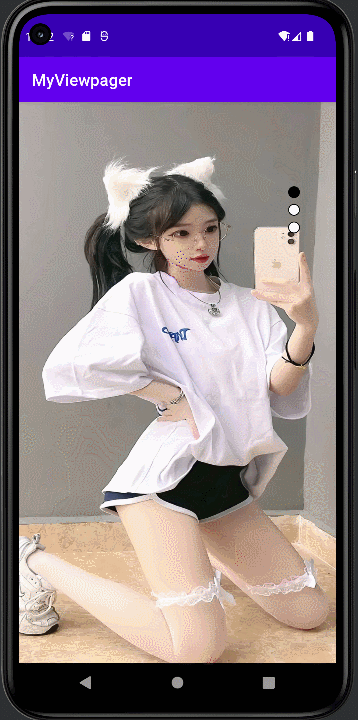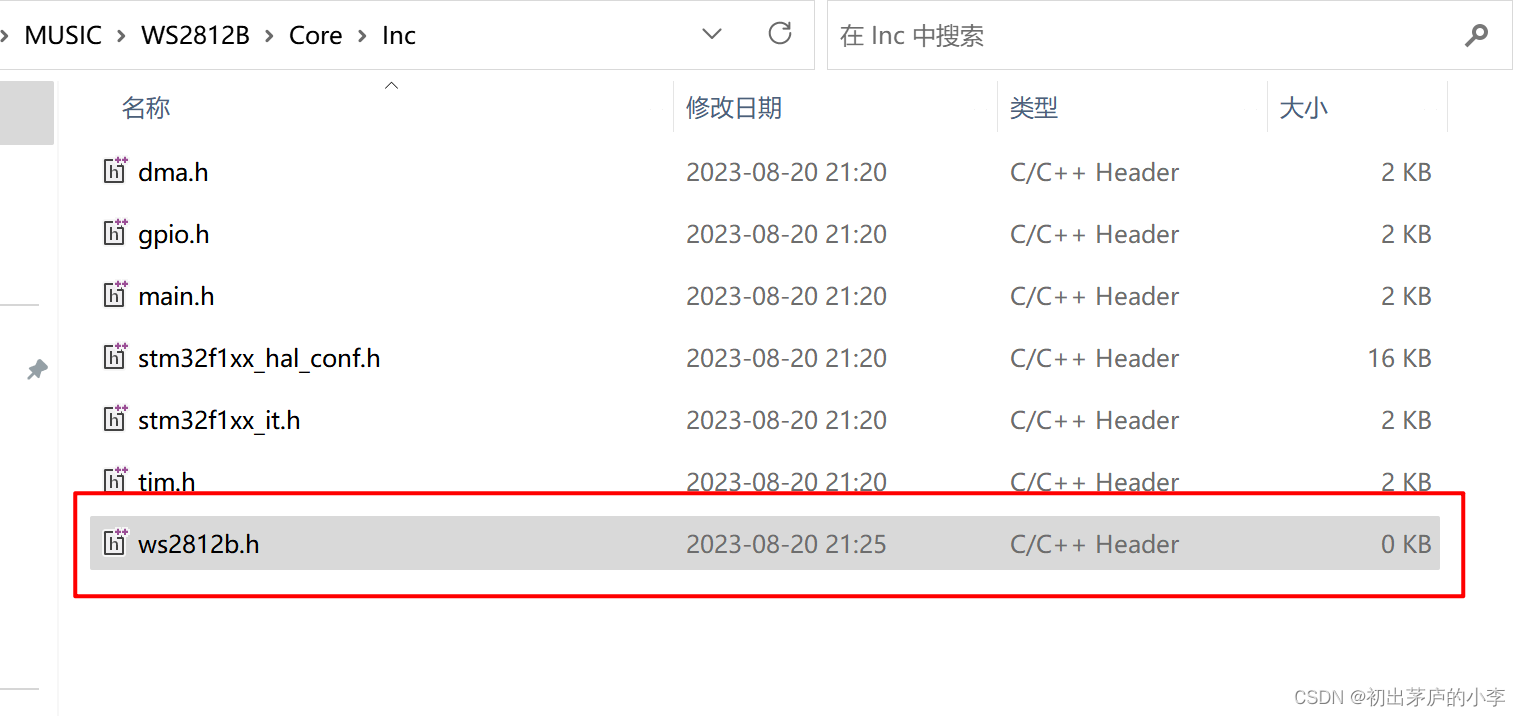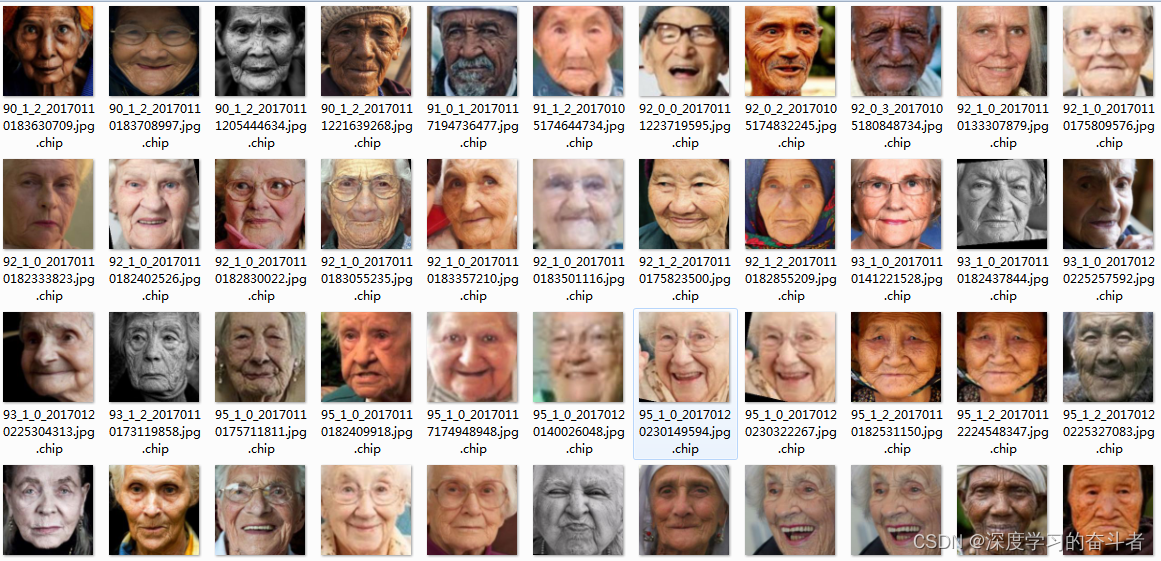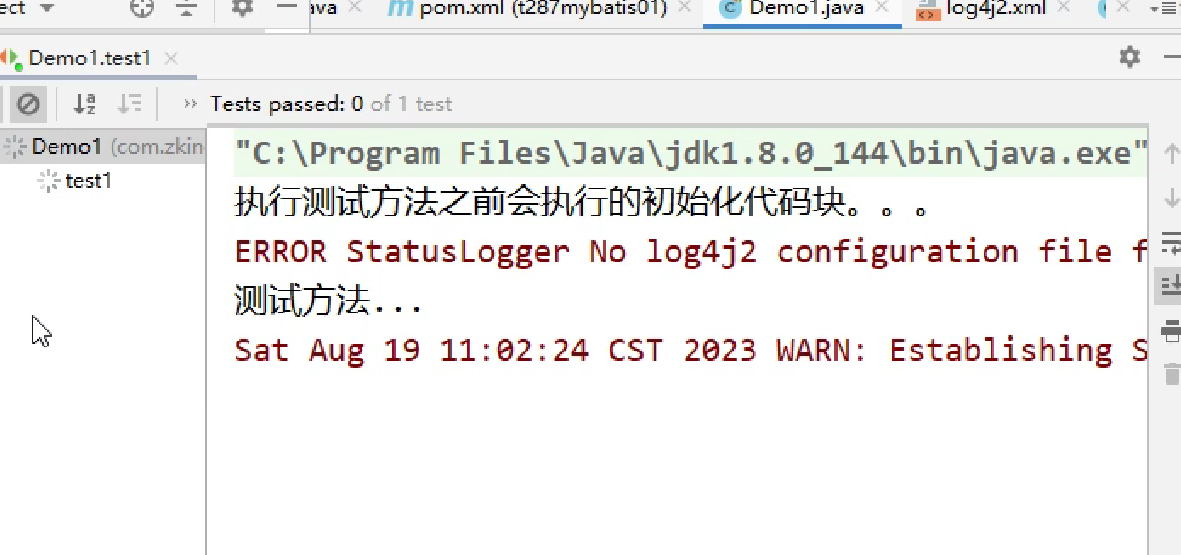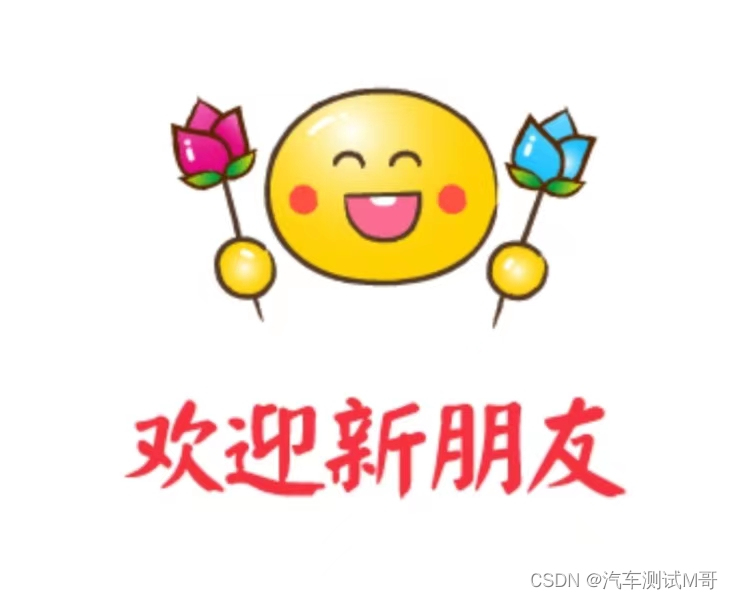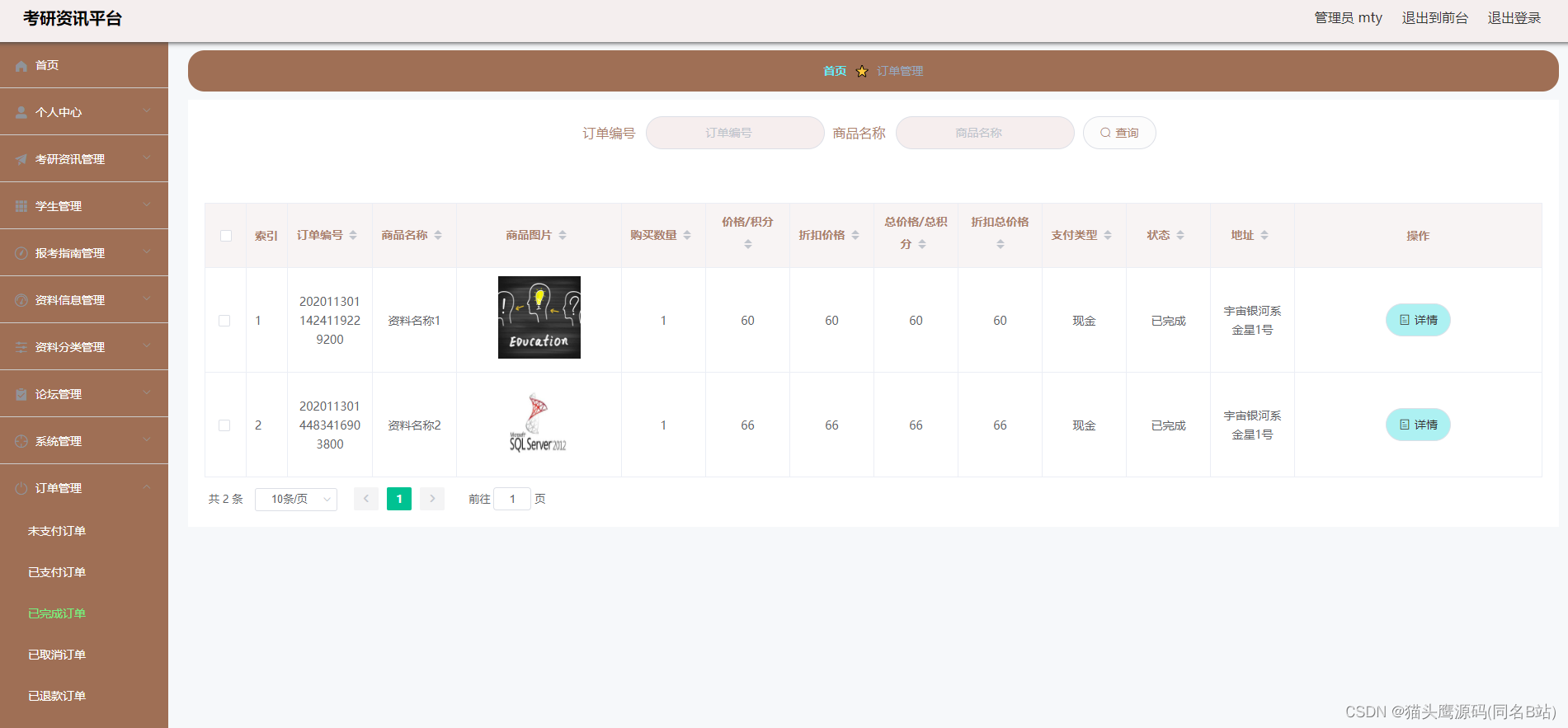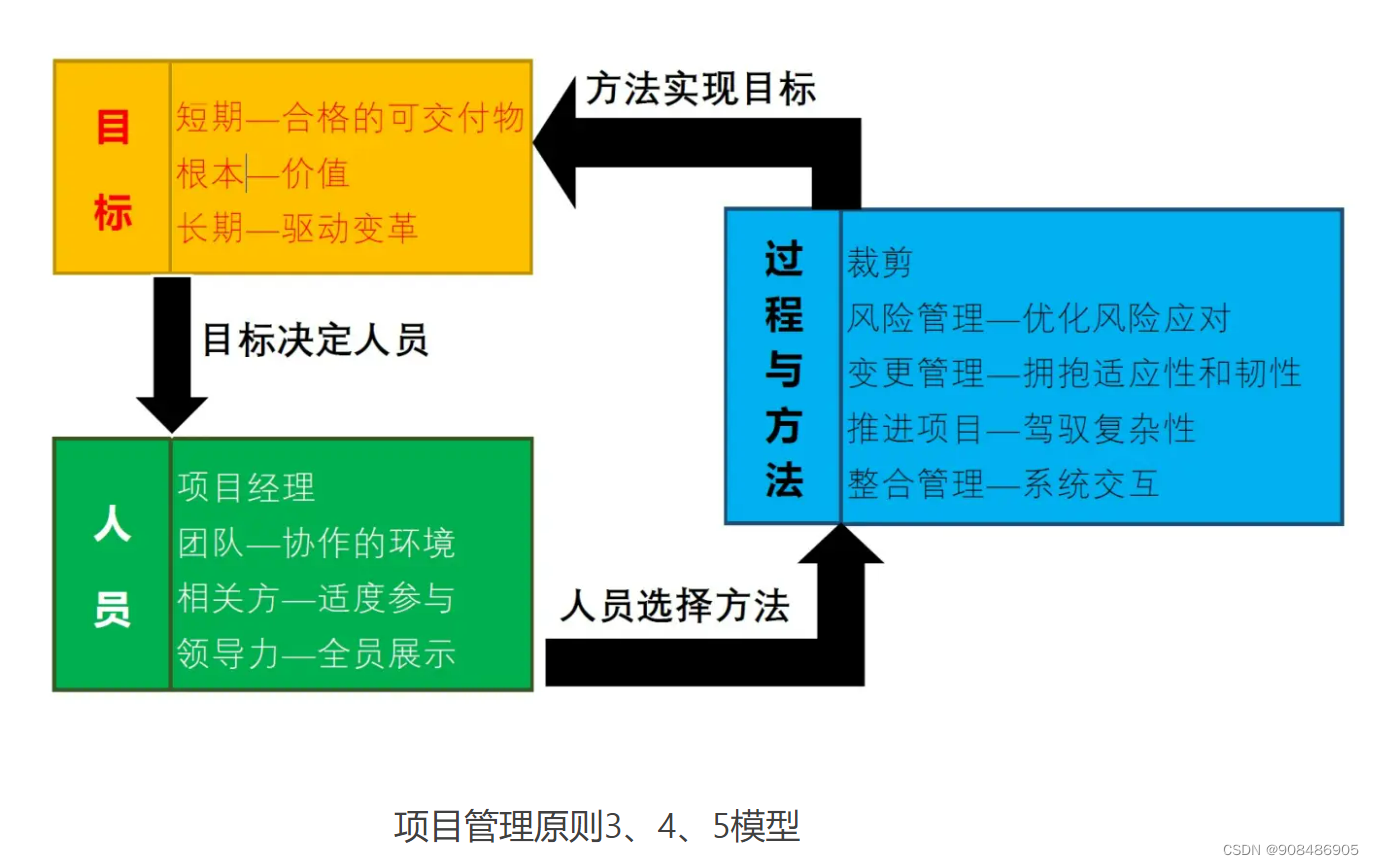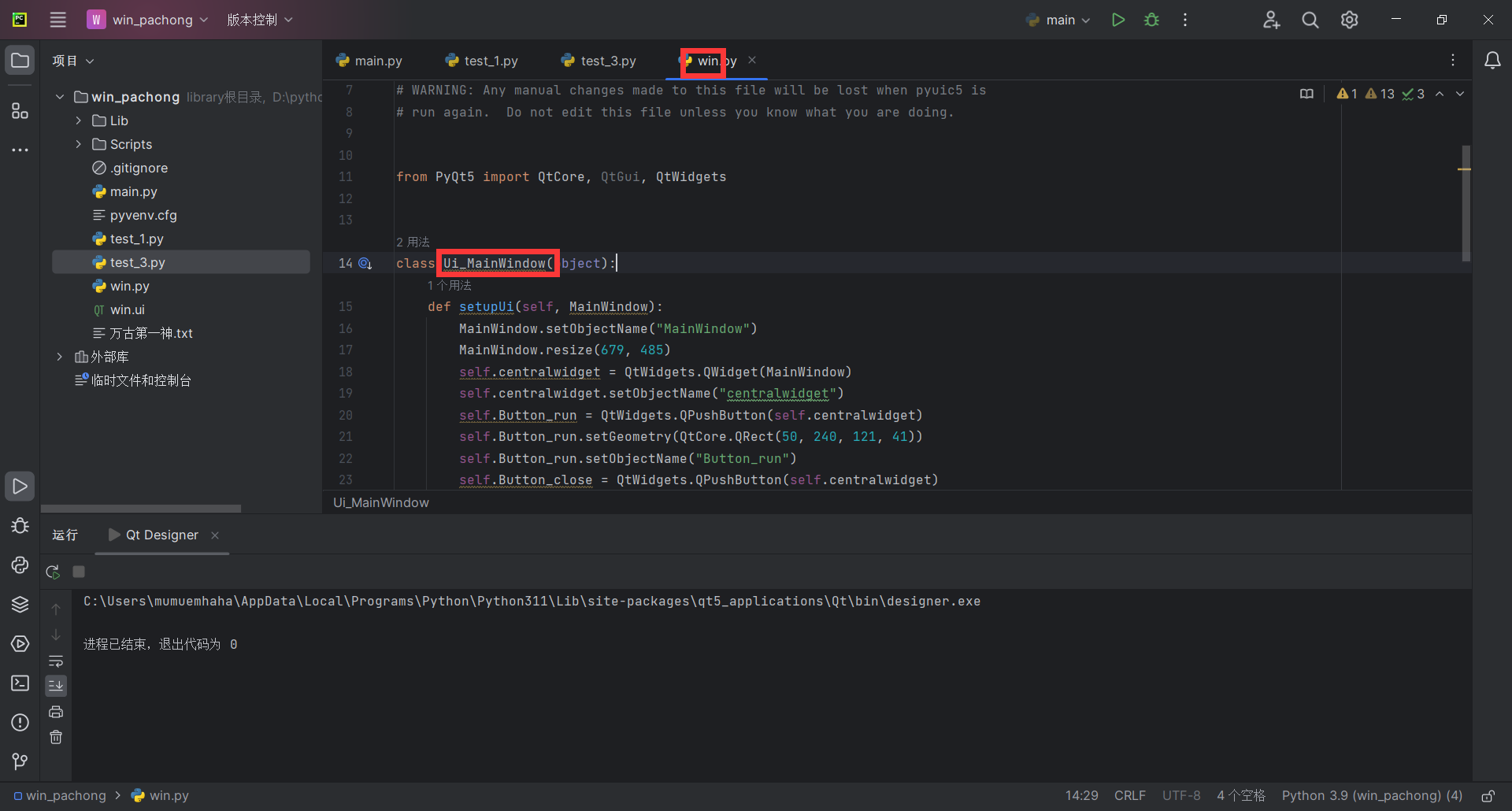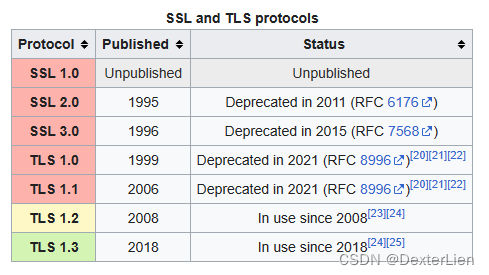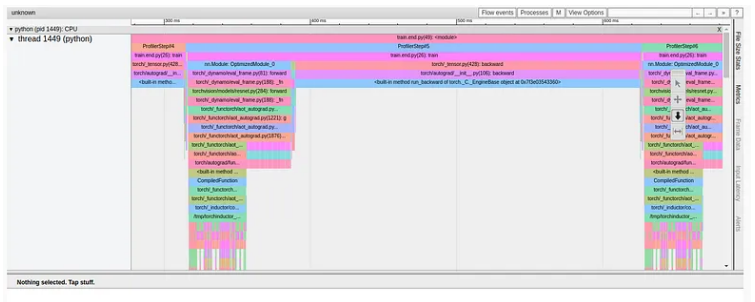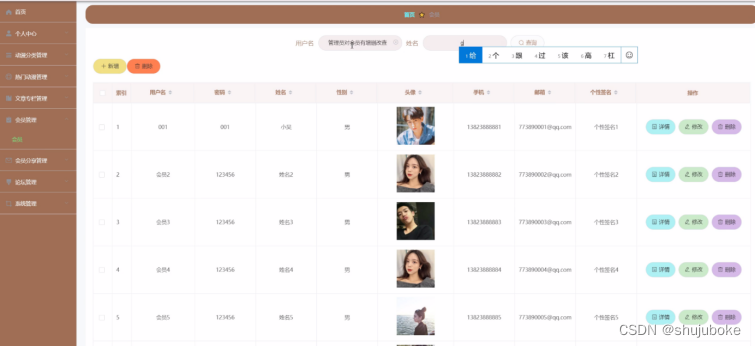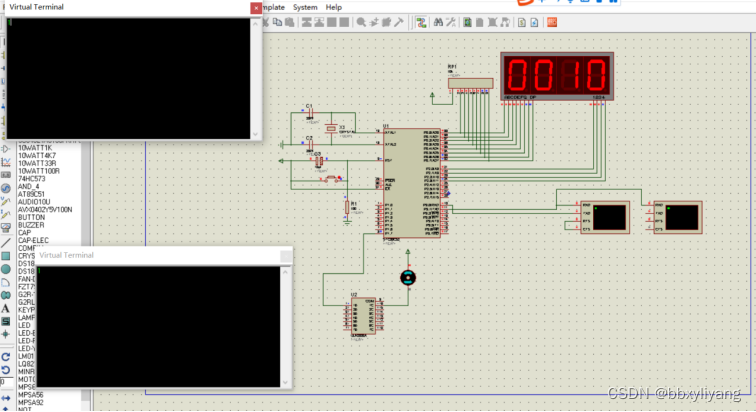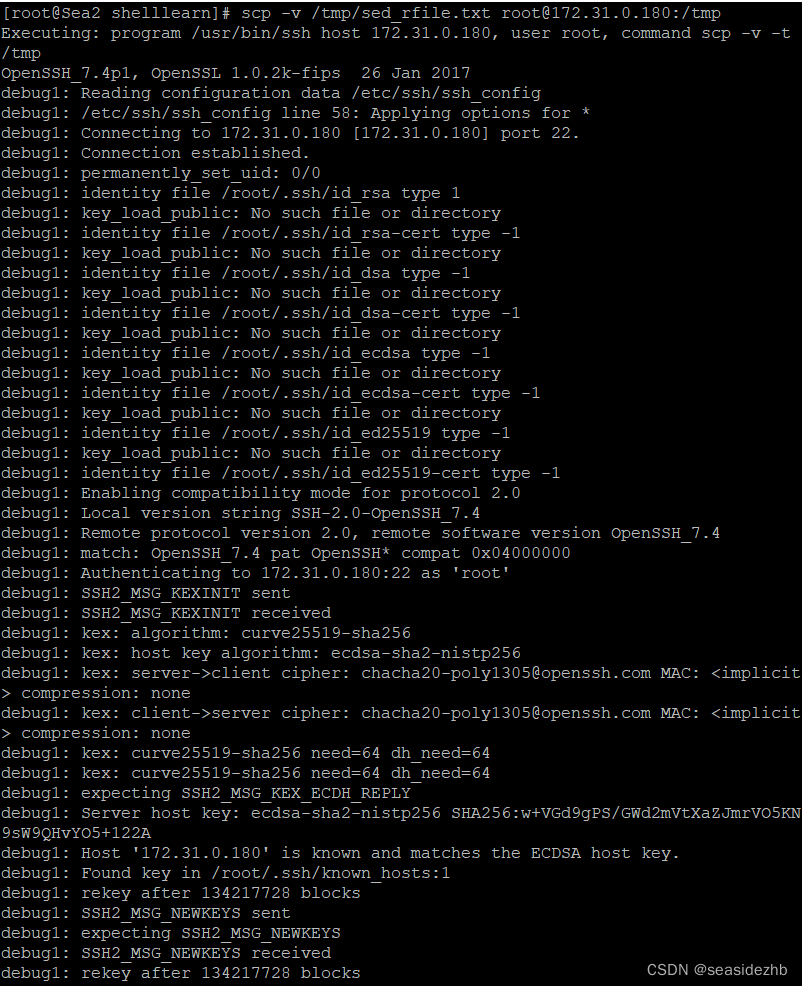Viewpager2+Fragment+指示器
MainActivity.java package com. huawei. myviewpager ;
import androidx. appcompat. app. AppCompatActivity ;
import androidx. fragment. app. Fragment ;
import androidx. viewpager2. widget. ViewPager2 ;
import android. os. Bundle ;
import android. view. View ;
import android. widget. LinearLayout ;
import com. huawei. myviewpager. adapter. MyFragmentPagerAdapter ;
import com. huawei. myviewpager. fragment. FirstFragment ;
import com. huawei. myviewpager. fragment. SecondFragment ;
import com. huawei. myviewpager. fragment. ThirdFragment ;
import java. util. ArrayList ;
import java. util. List ;
public class MainActivity extends AppCompatActivity {
private MyFragmentPagerAdapter mAdapter;
private ViewPager2 mViewpager;
private List < Fragment > ;
private LinearLayout mPointIndicator;
@Override
protected void onCreate ( Bundle savedInstanceState) {
super . onCreate ( savedInstanceState) ;
setContentView ( R . layout. activity_main) ;
mList = new ArrayList < > ( ) ;
mList. add ( new FirstFragment ( ) ) ;
mList. add ( new SecondFragment ( ) ) ;
mList. add ( new ThirdFragment ( ) ) ;
mAdapter = new MyFragmentPagerAdapter ( this , mList) ;
initView ( ) ;
}
private void initView ( ) {
mViewpager = findViewById ( R . id. vp2) ;
mViewpager. setAdapter ( mAdapter) ;
mPointIndicator = findViewById ( R . id. fragment_indicator) ;
insertPoint ( ) ;
mViewpager. registerOnPageChangeCallback ( new ViewPager2. OnPageChangeCallback ( ) {
@Override
public void onPageSelected ( int position) {
int realPosition;
if ( position != 0 ) {
realPosition = position % 3 ;
} else {
realPosition = 0 ;
}
setSelectPoint ( realPosition) ;
}
} ) ;
}
private void insertPoint ( ) {
for ( int i = 0 ; i < 3 ; i++ ) {
View point = new View ( MainActivity . this ) ;
LinearLayout. LayoutParams layoutParams = new LinearLayout. LayoutParams ( 40 , 40 ) ;
layoutParams. topMargin = 20 ;
if ( i == 0 ) {
point. setBackground ( getResources ( ) . getDrawable ( R . drawable. indicator_point_selected) ) ;
} else {
point. setBackground ( getResources ( ) . getDrawable ( R . drawable. indicator_point_unselected) ) ;
}
point. setLayoutParams ( layoutParams) ;
mPointIndicator. addView ( point) ;
}
}
private void setSelectPoint ( int realPosition) {
for ( int i = 0 ; i < mPointIndicator. getChildCount ( ) ; i++ ) {
View point = mPointIndicator. getChildAt ( i) ;
if ( i == realPosition) {
point. setBackgroundResource ( R . drawable. indicator_point_selected) ;
} else {
point. setBackgroundResource ( R . drawable. indicator_point_unselected) ;
}
}
}
}
activity_main.xml <?xml version="1.0" encoding="utf-8"?>
< RelativeLayoutxmlns: android= " http://schemas.android.com/apk/res/android" xmlns: app= " http://schemas.android.com/apk/res-auto" xmlns: tools= " http://schemas.android.com/tools" android: layout_width= " match_parent" android: layout_height= " match_parent" tools: context= " .MainActivity" > < androidx.viewpager2.widget.ViewPager2android: id= " @+id/vp2" android: orientation= " vertical" android: layout_width= " match_parent" android: layout_height= " match_parent" /> < LinearLayoutandroid: id= " @+id/fragment_indicator" android: layout_width= " 40dp" android: layout_height= " 100dp" android: layout_alignParentEnd= " true" android: layout_marginEnd= " 32dp" android: layout_marginTop= " 80dp" android: gravity= " center" android: orientation= " vertical" /> </ RelativeLayout> MyFragmentPagerAdapter package com. huawei. myviewpager. adapter ;
import java. util. List ;
import androidx. annotation. NonNull ;
import androidx. fragment. app. Fragment ;
import androidx. fragment. app. FragmentActivity ;
import androidx. viewpager2. adapter. FragmentStateAdapter ;
public class MyFragmentPagerAdapter extends FragmentStateAdapter {
private List < Fragment > ;
public MyFragmentPagerAdapter ( @NonNull FragmentActivity fragmentActivity, List < Fragment > ) {
super ( fragmentActivity) ;
mList = list;
}
@NonNull
@Override
public Fragment createFragment ( int position) {
Fragment fragment = mList. get ( position) ;
return fragment;
}
@Override
public int getItemCount ( ) {
return mList. size ( ) ;
}
}
FirstFragment.java public class FirstFragment extends Fragment {
@Nullable
@Override
public View onCreateView ( @NonNull LayoutInflater inflater, @Nullable ViewGroup container, @Nullable Bundle savedInstanceState) {
return inflater. inflate ( R . layout. fragment_first, container, false ) ;
}
}
fragment_first.xml,三个fragment相同布局 <?xml version="1.0" encoding="utf-8"?>
< RelativeLayoutxmlns: android= " http://schemas.android.com/apk/res/android" android: layout_width= " match_parent" android: layout_height= " match_parent" > < ImageViewandroid: layout_width= " match_parent" android: layout_height= " match_parent" android: scaleType= " fitXY" android: src= " @drawable/img9" /> </ RelativeLayout> indicator_point_selected.xml 指示器选中shape <?xml version="1.0" encoding="utf-8"?>
< shapexmlns: android= " http://schemas.android.com/apk/res/android" > < cornersandroid: radius= " 250dp" /> < solidandroid: color= " #FF000000" /> < strokeandroid: color= " #FF000000" /> </ shape> indicator_point_unselected.xml 指示器未选中shape <?xml version="1.0" encoding="utf-8"?>
< shapexmlns: android= " http://schemas.android.com/apk/res/android" > < cornersandroid: radius= " 250dp" /> < solidandroid: color= " #FFFFFFFF" /> < strokeandroid: width= " 1dp" android: color= " #FF000000" /> < cornersandroid: radius= " 250dp" /> < solidandroid: color= " #FFFFFFFF" /> < strokeandroid: width= " 1dp" android: color= " #FF000000" />
